Galapagos Islands Animals
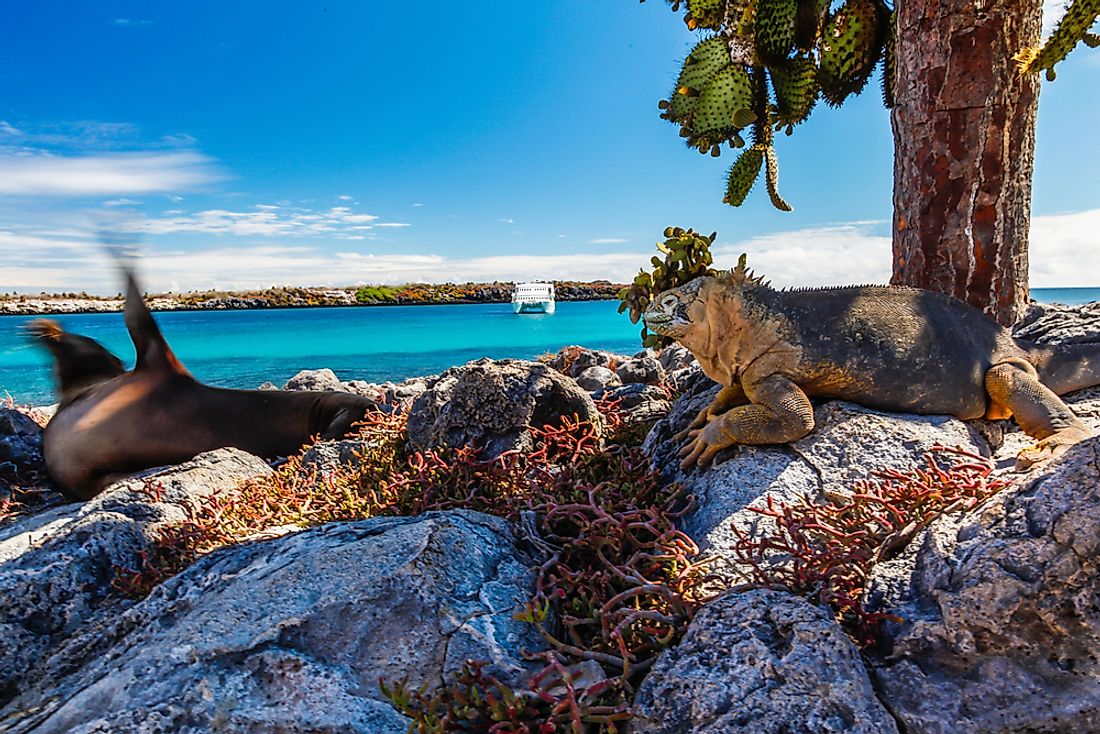
The Galápagos Islands, an archipelago with islands distributed on either side of the Equator in the Pacific Ocean, 906 km west of mainland Ecuador, is famous for the vast number of endemic species housed on the islands of the archipelago. These species were studied by Charles Darwin during the voyage of the Beagle. His study and observations of the fauna of Galapagos led to the birth of Darwin’s theory of evolution by natural selection. In this article, we describe some of the most notable species living on the Galapagos Islands today. Most of these species are threatened due to disturbances created by humans in their natural habitat. The animals that live in the Galapagos Islands are as follows:
10. Galapagos Land Iguana
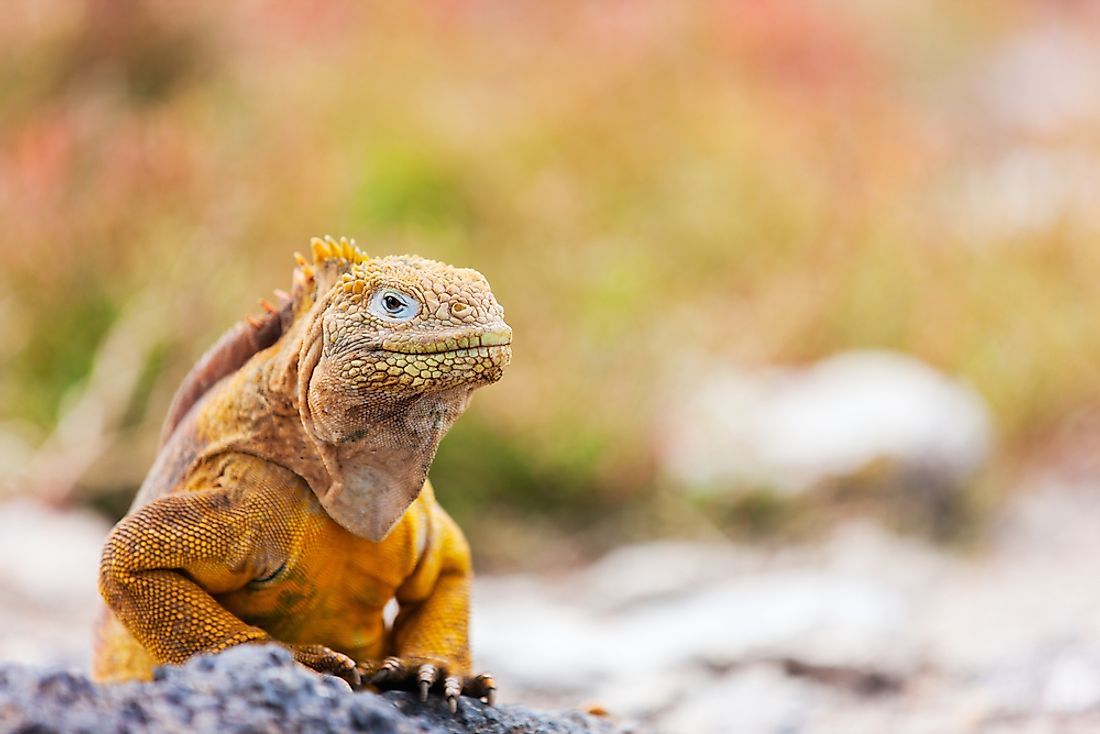
A species of terrestrial lizard, the Galapagos land iguana (Conolophus subcristatus) is endemic to the Galapagos Islands. These animals are mainly herbivorous in nature. However, some reports of these lizards being carnivorous in nature also exist. The land iguanas obtain most of the moisture from the prickly-pear cactus that constitutes 80% of the diet of these lizards.
9. Galapagos Hawk
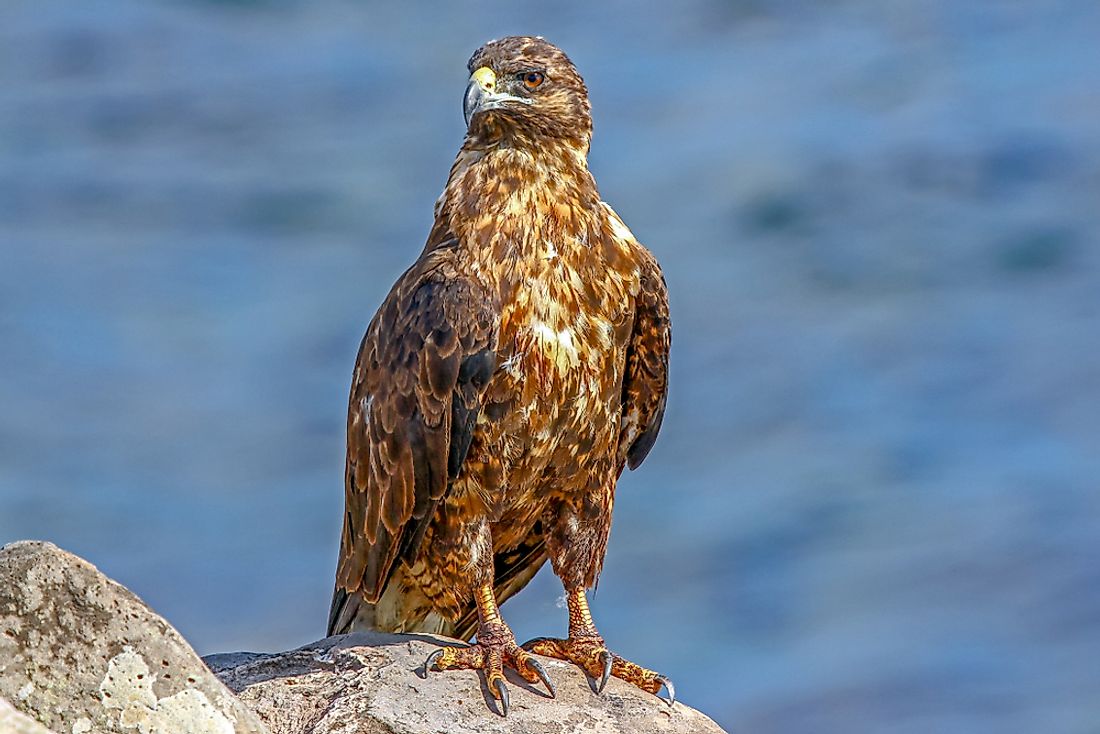
The Galapagos hawk (Buteo galapagoensis) is a large species of hawk endemic to the Galapagos Islands. The size of the hawk can range from 45 to 58 cm. The wingspan ranges from 116 to 140 cm. The adults of this species generally have a sooty brownish color. The Galapagos hawk is an apex predator with excellent vision. They feed on insects, lizards, snakes, and rodents living on the island. However, marine and land iguanas, sea turtles, and tortoise hatchlings might also serve as their prey on some occasions. The hawks hunt in small groups and the dominant one in the group gets to first feed on the prey or carrion till it is satisfied. The rest of the group joins after that. The Galapagos hawk builds its nest on lava ledges, low trees or even the ground.
The Galapagos hawk is not completely free of danger. Disturbances created in their natural habitat by humans, a dwindling food supply due to the introduction of invasive species, and persecution by humans has led to a drastic decline in the population of these birds. It is believed there are only 150 mating pairs living today.
8. Galápagos Cormorant
The flightless cormorant or the Galapagos cormorant (Phalacrocorax harrisi), is an avian native to the Galapagos Islands. It is a highly unusual fauna since it has lost the ability to fly. The flightless cormorant has powerful legs and webbed feet that propel it through waters of the ocean. The bird feeds on octopuses, eels, fish, and other small creatures in the water. The flightless cormorant has a highly restricted range on the Galapagos Islands and is found only on the two islands of Fernandina and Isabela. These birds are extremely sedentary in nature and live most of their lives on local stretches of coastline. The flightless cormorant is vulnerable species today. The introduction of invasive species like cats, dogs has led to the adult and nestlings of these birds being hunted extensively as prey by these invasive creatures. Irresponsible fishing practices and climate change also threaten the survival of the flightless cormorant.
7. Galápagos Petrel
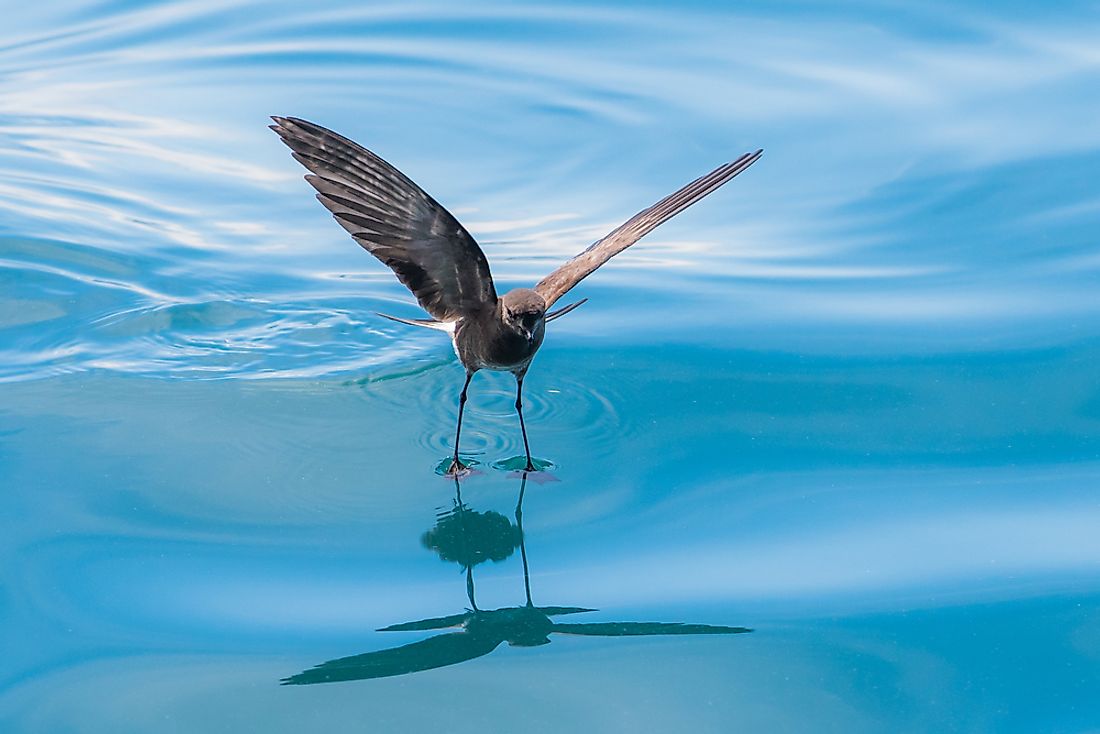
The Galápagos petrel (Pterodroma phaeopygia) is an endemic marine bird living in the Galapagos Islands. The bird nests in the humid highland areas of five islands in Galapagos. The bird is classified as critically endangered since the population of the Galapagos kestrel was significantly reduced due to predation by invasive species. Black rats introduced in Galapagos by humans led to the loss of kestrel hatchlings and invasive plants in the kestrel habitat adversely altered the feeding habits of the bird.
6. Galapagos Sea Lions
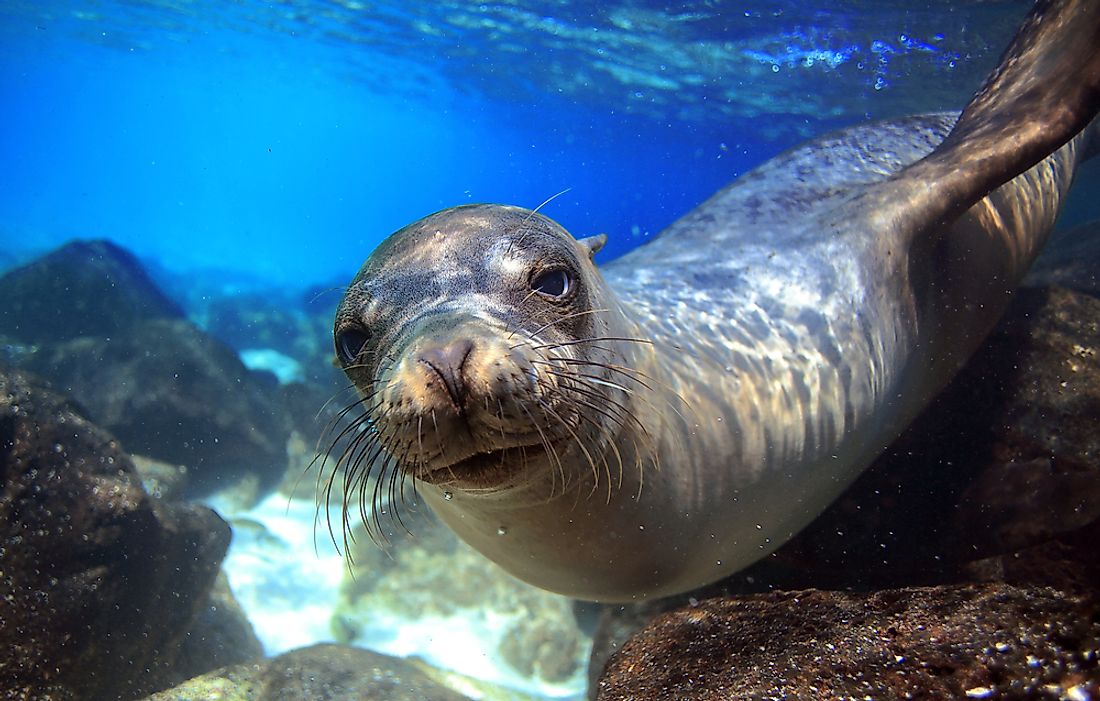
The Galápagos sea lion (Zalophus wollebaeki) is a sea lion species that is found only on the Galapagos Islands and Ecuador’s Isla de la Plata. These animals can be observed bathing in the sunshine on rock groups or sandy shores or gliding along the surf. The sea lions’ playful nature, loud bark, and graceful movements are a welcoming sight for visitors to Galapagos. Though protected by law, the sea lions are still susceptible to certain threats such as the el Niño events and predation by sharks and killer whales.
5. Marine Iguana
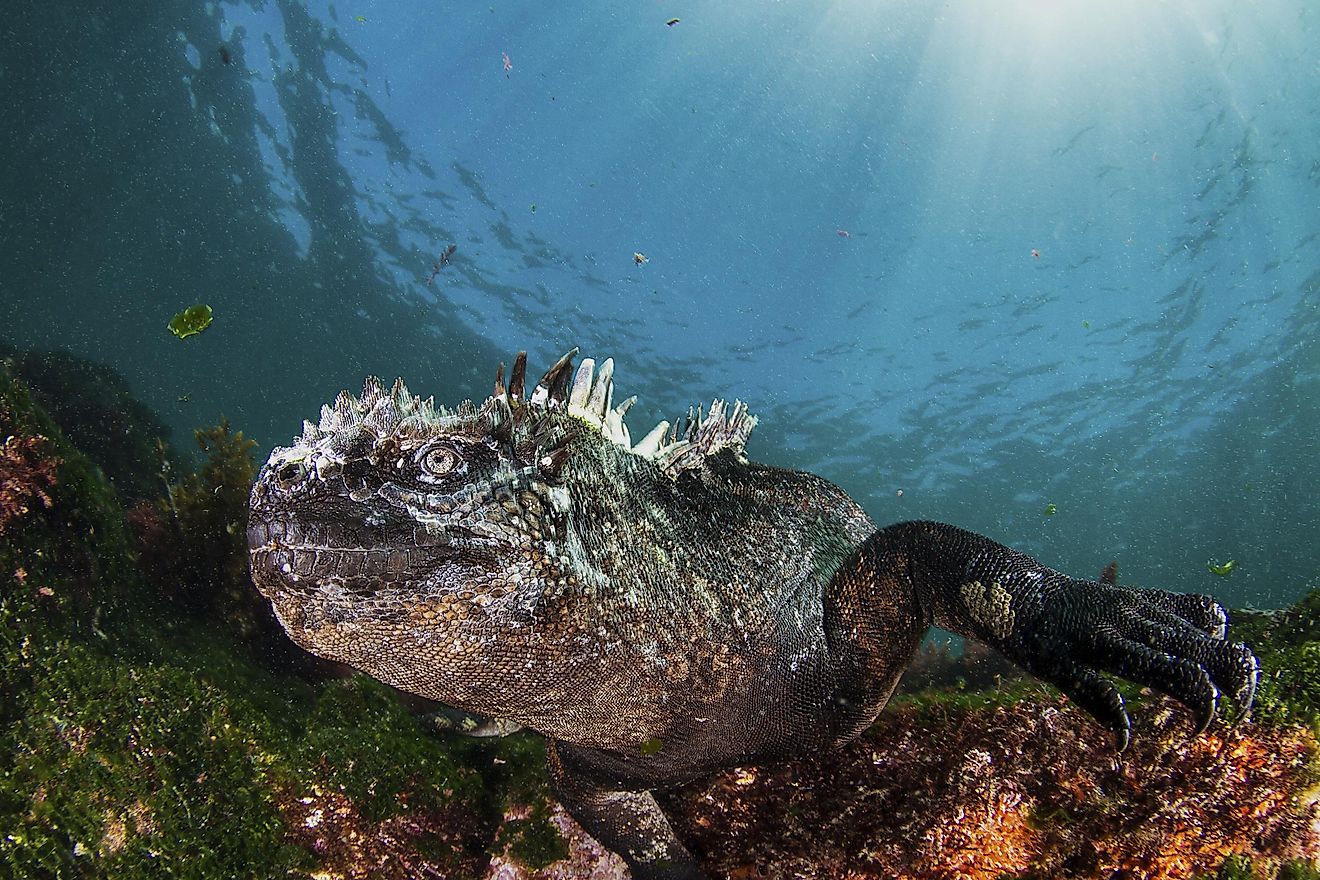
Found only on the Galapagos Islands, the marine iguana (Amblyrhynchus cristatus) is a modern reptile with the unique ability to forage in the sea. The iguana can dive nearly 30 feet in the water. The reptiles can be spotted basking in the sun on the shores, marshes and mangrove beaches of the islands. The marine iguana feeds exclusively on the inter- and subtidal algae. Since the reptile is an ectothermic animal, it can only spend a limited amount of time in the relatively cold waters of the Galapagos. It warms up by basking in the sun.
The marine iguana is currently classified as a Vulnerable species by the IUCN. The reptiles have suffered a drastic population decline since the arrival of humans on the Galapagos. Lacking defensive mechanisms due to the relative isolation for thousands of years, the marine iguanas are highly susceptible to attacks by the invasive species on the island. Also, these reptiles are susceptible to infections by human pathogens to which they have no immunity.
4. Galapagos Fur Seals
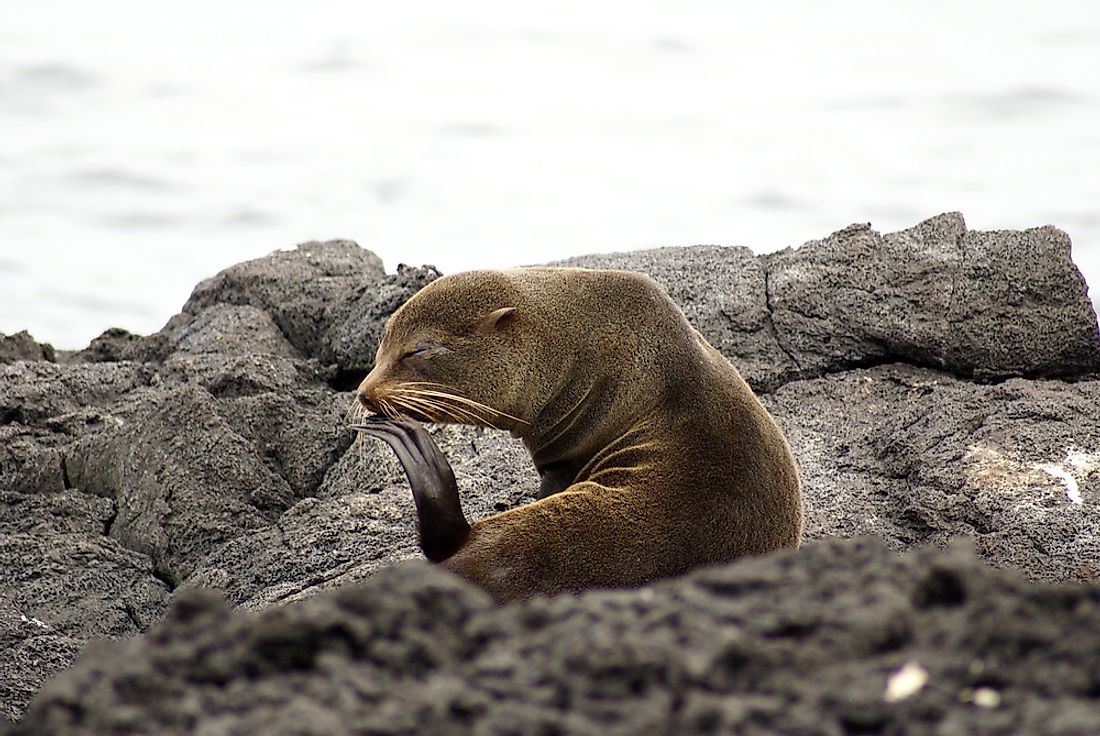
The Galápagos fur seal (Arctocephalus galapagoensis) lives in the Galapagos Island and a small colony lives in Peru. This species is the smallest of otariids. The seals spend over 70% of their time on land that differentiates their behavior from other seal species that spend nearly half of their time in the water. The seals form large colonies that can be sighted on the rocky shores of the Galapagos Islands. The Galápagos fur seals have the lowest reproductive rate among all seal species. Mothers are extremely protective of their own offsprings and tend to them with great care. The seals mainly feed on cephalopods and fish near the surface and close to the sea-shore.
Since the 19th century, the Galapagos fur seals have suffered a dramatic decline in population. In the 1800’s, thousands of these seals were culled for their fur by poachers. Strict laws were introduced in 1959 by Ecuador to protect the animals. However, the 1982 to 1983 El Niño weather event was another tragic blow to the Galapagos seal conservation. During this event, nearly 30% of the adult seals died and all the seal pups were wiped out. Currently, the population of the Galapagos seals is rising and is quite stable.
3. Galapagos Finches
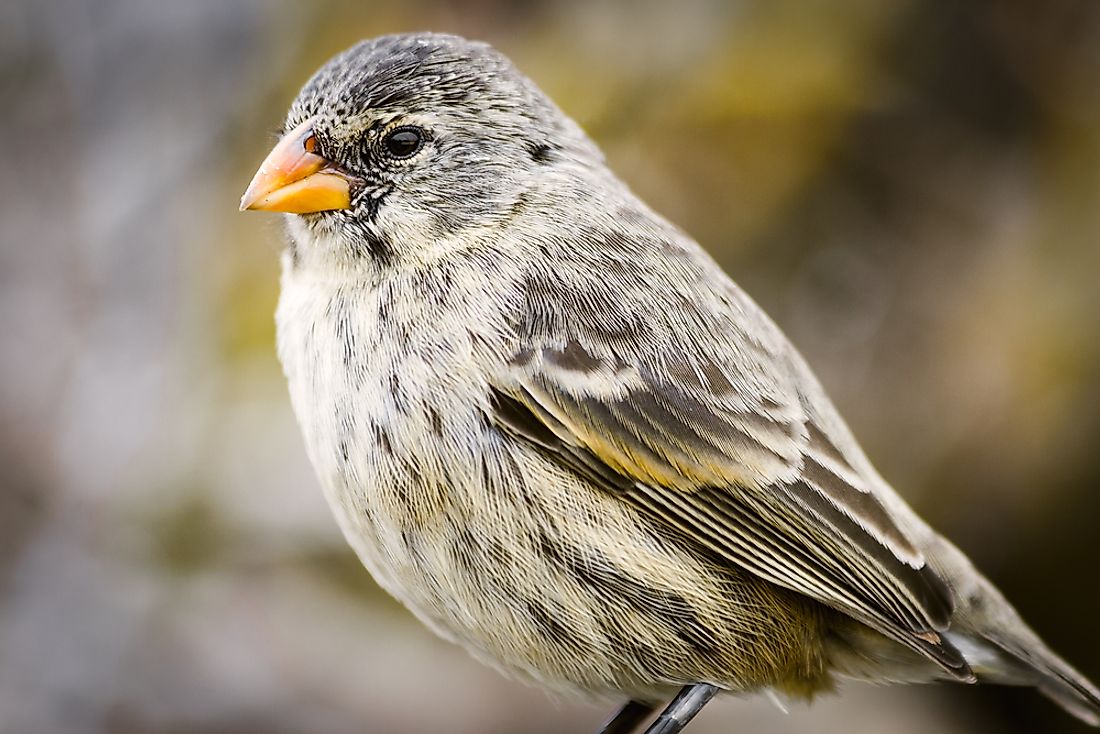
The Galapagos finches or the Darwin’s finches are perhaps the most famous fauna inhabiting the Galapagos Islands. The finches include 15 species of passerine birds which were studied by Charles Darwin and helped him derive the ground-breaking theory of natural selection. The Darwin’s finches are known for their unique beaks and specialized functions. The birds vary in size between 10 and 20 cm and weigh from 8 to 38 grams. The warbler-finches are the smallest of the Galapagos finches and the vegetarian finches are the largest.
2. Galapagos Penguins
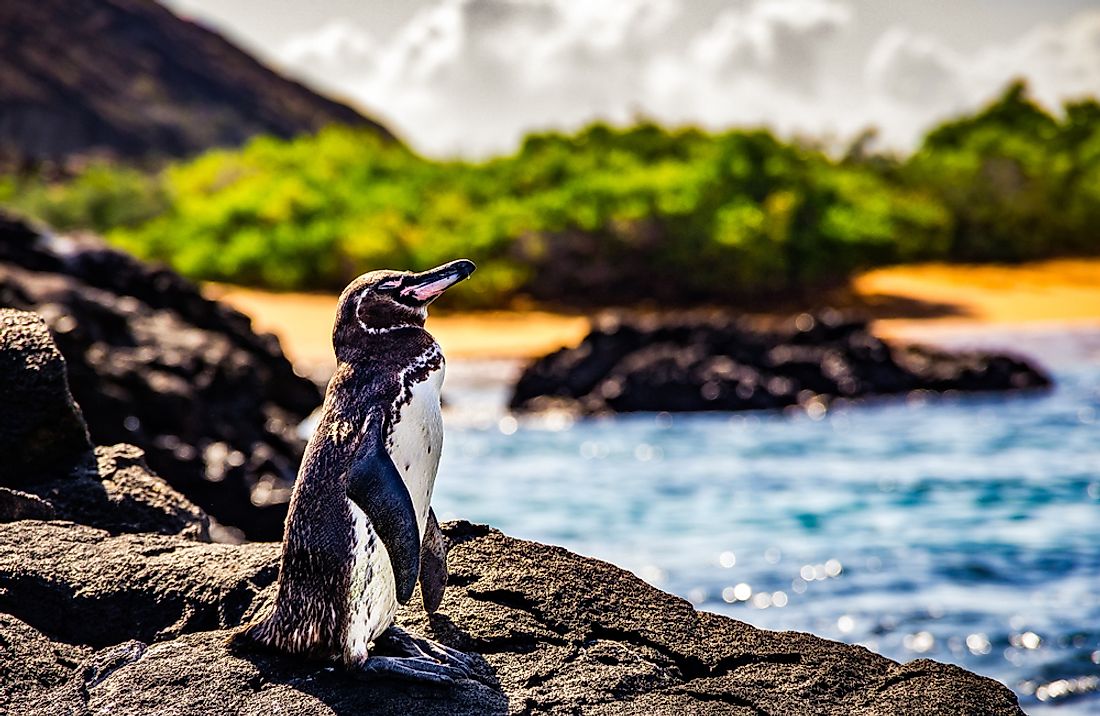
The Galápagos penguin (Spheniscus mendiculus) is endemic to the islands of the Galapagos and is the only species of penguin living north of the equator. The Humboldt Current and the Cromwell Current in the region are responsible for the relatively lower water temperatures around the Galapagos Islands that help sustain the penguin population here. The Galapagos penguins feed on small schooling fish like mullet, sardines, and also crustaceans.
This species of penguin is currently endangered with only about 1,500 surviving individuals as of 2004. The 1980’s was one of the worst periods for these animals when they suffered a population decline of about 70%. The Galapagos penguin is thus the rarest species of penguin. The introduction of animals like cats, rats, and dogs have led to a dramatic decline in the population of this species. Oil pollution, death as bycatch are the other factors that have adversely affected these penguins. Climate change that would affect water temperatures and ocean currents could have a major negative impact on the penguins populations in the future.
1. Galapagos Tortoises
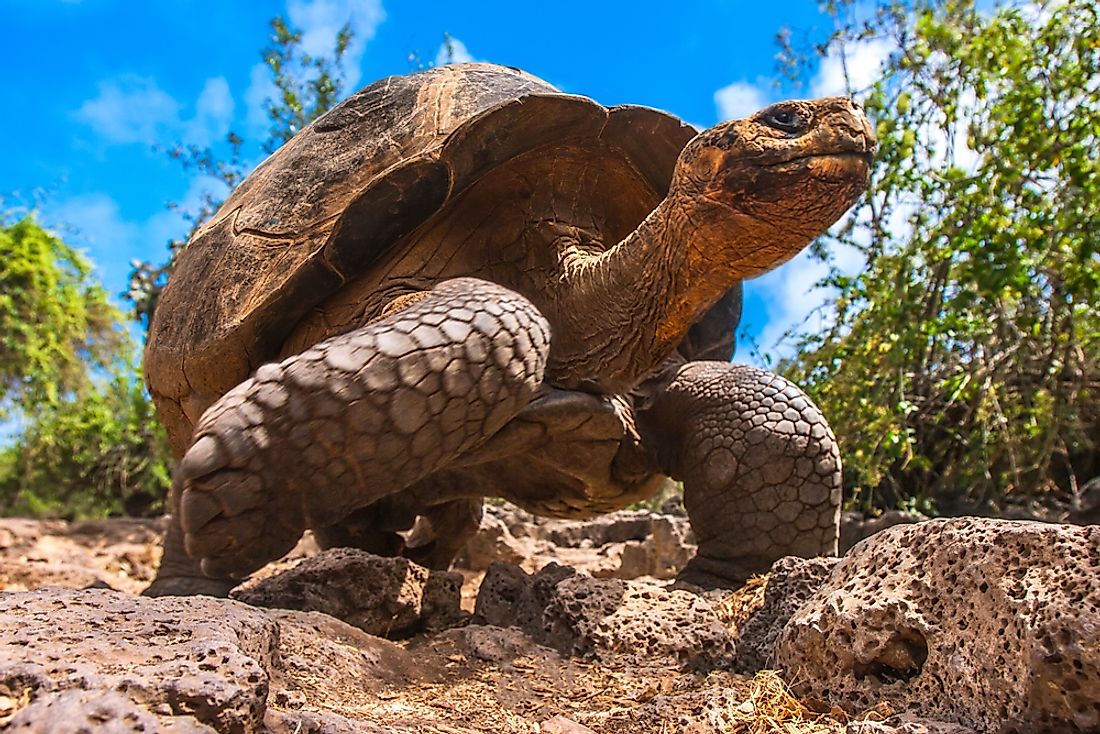
The Galapagos tortoise (Chelonoidis nigra) is one of the most notable species inhabiting the Galapagos islands. The tortoise is the largest among all extant species of tortoises and can weigh as much as 417 kg. It is also one of the longest living vertebrates with life-span of 100 years or more in the wild. The Galapagos tortoise is a herbivore that feeds on leaves, grass, cacti, oranges, milkweed, melons, etc. The tortoise is classified as Vulnerable by the IUCN. The population of the Galapagos tortoise drastically declined from 250,000 in the 16th century to only 3,000 in the 1970’s. Years of exploitation for meat and oil, habitat destruction, and invasion by invasive species have led to this poor condition of the Galapagos tortoise. Conservation programs involving captive breeding and introduction to the wild have been adopted to save the species. Hunting of these tortoises is also prohibited by law.











